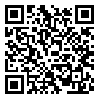Volume 7, Issue 1 (Feb 2022)
JNFS 2022, 7(1): 1-3 |
Back to browse issues page
Department of Human Ecology, School of Public Health, Shahid Sadoughi University of Medical Sciences, Yazd, Iran.
Abstract: (1763 Views)
The prevalence of obesity in adolescents has increased over the past three decades. Recent evidence has shown that in developed countries, about one in five teens is obese (Abdelghaffar et al., 2020). In Iran, the prevalence of overweight and obesity is 23% (Moghimi-Dehkordi et al., 2020). Improper eating behaviors and obesity are major concerns in adolescence that can be associated with the risk of many chronic diseases in adulthood. In fact, the main axis and key to obesity in adolescents is bad eating habits. In fact, due to faster growth and development in adolescence than other periods, nutritional needs and nutrient consumption in this period are important for growth and development and health. Many eating habits, physical, mental, and intellectual development are formed in childhood and adolescence
Type of article: letter to the editor |
Subject:
public specific
Received: 2021/01/21 | Published: 2022/01/22 | ePublished: 2022/01/22
Received: 2021/01/21 | Published: 2022/01/22 | ePublished: 2022/01/22
References
1. Abdelghaffar E-A, Hicham EK, Siham B, Samira EF & Youness EA 2020. Social-ecological influences on unhealthy dietary behaviours among Moroccan adolescents: a mixed-methods study. Public health nutrition. 23 (6): 996.
2. AlAbdulKader AM, Tuwairqi K & Rao G 2020. Obesity and Cardiovascular Risk in the Arab Gulf States. Current cardiovascular risk reports. 14: 1-9.
3. Aleong C 2018. A Complementary Teaching Activity for Food Security and Healthy Eating Behavior Change in a Community College. HETS online journal. 8 (2): 5-19.
4. Cha EM 2018. Factors Affecting Food Intake and BMI in Adolescents Using the Social-Ecological Model. The University of Texas School of Public Health.
5. Delaney CL, Spaccarotella K, Quick V & Byrd-Bredbenner C 2021. A Comparison of Weight-Related Behaviors of Hispanic Mothers and Children by Acculturation Level. International journal of environmental research and public health. 18 (2): 503.
6. Fasihah A 2020. The factors influencing obesity among healthcare workers in two public hospitals in Kedah. Universiti Utara Malaysia.
7. Khatod L 2020. A Phenomenological Qualitative Study Investigating the Social and Ecological Determinants that Influence Military Childhood Overweight and Obesity Behaviors, https:// shareok.org/handle/11244/326686.
8. Killian CM, Kern BD, Ellison DW, Graber KC & Woods AM 2020. State Lawmaker's Views on Childhood Obesity and Related School Wellness Legislation. Journal of school health. 90 (4): 257-263.
9. Mann G, Greer S, Lambert L & Miller RG 2021. Using the social ecological model to evaluate university faculty and staff perceptions of the campus food environment. International journal of health promotion and education. 1-14.
10. Marzban A & Khabiri F 2021. Breakfast and Obesity. Journal of nutrition and food security. 6 (1): 1-2.
11. Marzban A, et al. 2019. Correlation between Religiosity and Nutritional Behavior in Students of Shahid Sadoughi University of Medical Sciences in Yazd. Journal of nutrition and food security. 4 (4): 256-262.
12. Moghimi-Dehkordi B, et al. 2020. The prevalence of obesity and its associated demographic factors in Tehran, Iran. Health and development journal. 1 (1): 22-30.
13. Mohajeri M, et al. 2020. Some behavioral risk factors of obesity in Ardabil–Iran adults. Obesity medicine. 18: 100167.
14. Noh K & Min JJ 2020. Understanding School-Aged Childhood Obesity of Body Mass Index: Application of the Social-Ecological Framework. Children. 7 (9): 134.
15. Pourabdian S, Golshiri P & Janghorbani M 2020. Overweight, underweight, and obesity among male long-distance professional drivers in Iran. Journal of occupational health. 62 (1): e12114.
16. Úbeda-Colomer J, Ginis KAM, Monforte J, Pérez-Samaniego V & Devís-Devís J 2019. Predicting physical activity in university students with disabilities: The role of social ecological barriers in the theory of planned behaviour. Disability and health journal. 12 (4): 574-580.
17. Xiao Y, Huang W, Lu M, Ren X & Zhang P 2020. Social-Ecological Analysis of the Factors Influencing Shanghai Adolescents’ Table Tennis Skills: A Cross-Sectional Study. Frontiers in psychology. 11.
| Rights and permissions | |
 |
This work is licensed under a Creative Commons Attribution-NonCommercial 4.0 International License. |





